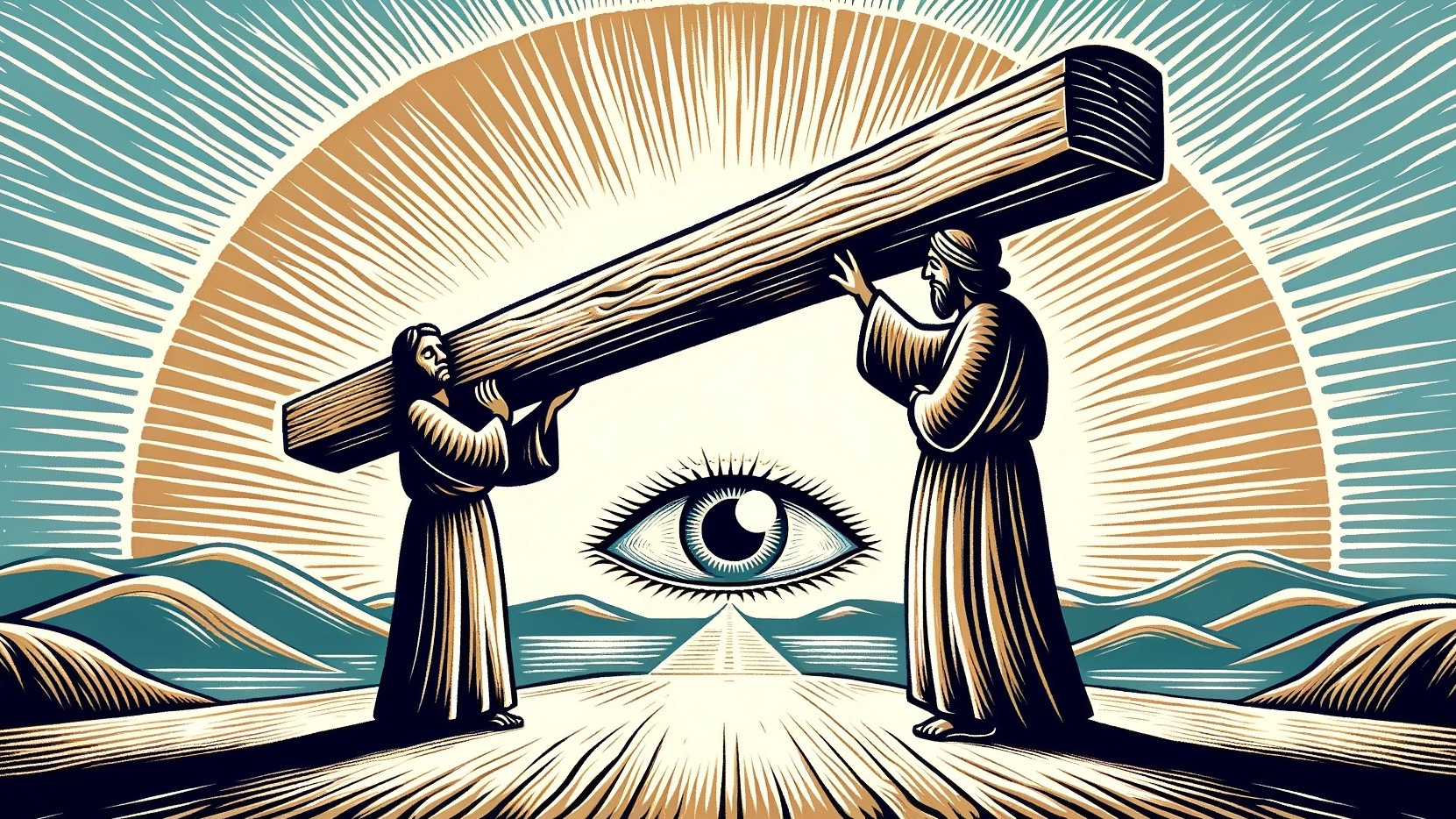
I intend to write a series of posts, each inspired by a random sentence from James Joyce’s Ulysses. To this end, I will let the book fall open where it will and take as my theme the first sentence I see. I won’t fact-check because I don’t want the hive mind to contribute to my free association.
Today’s sentence:
Some people, says Bloom, can see the mote in others’ eyes but they can’t see the beam in their own.
Of course, the quote refers to a well-known saying of Jesus, recorded in the Bible. He tells us that we must remove our own eye-beam before pointing out somebody else’s mote. I guess even the non-Christian reader will grasp this metaphor, so I hardly need elaborate.
The word «beam» strikes me as worthy of mention because it relates to the German word «Baum», meaning tree. I suppose speakers of Old English might sometimes have called a tree a «beam» or similar? And I can think of two species of tree with «beam» in their names: hornbeam and whitebeam.
When I first heard Jesus’s saying as a child I pictured a man in biblical dress with a huge chunk of wood in his eye, stretching the lid and causing painful splinters. And in my childish mind this picture rather overshadowed the moral message.
The quote also takes me back to a book of exam howlers that did the rounds during my schooldays. One such howler-answer asserted that «men wear turnips in their trousers». (I can’t imagine what exam question prompted this.) A drawing at the foot of the page showed a man with huge turnip-filled turn-ups. Beams in eyes and turnips in turn-ups.
[In my favorite, the hapless exam candidate had defined a «protestant» as «a woman who lives an immortal life». This presumably in answer to some question about the Reformation.]
Leaving aside the metaphorical beams in my own eyes, I always struggle to see a real mote in somebody else’s. How often has a companion told you they have something in their eye and asked you to look into it? Nine times out of ten you find nothing.
My landlady at university used to wear dark glasses – and insisted that she didn’t wear them out of vanity. She had an eye condition, she said, and had to go to the hospital to have injections in her eyeball. This struck me as improbable and inconceivable at the age of twenty or so in the early seventies. No, surely not! I thought. How could anybody tolerate having such a thing done to them!?
I can conceive of it now of course – now that I make my own annual visits to an eye hospital. They’ve never injected me in the eyeball, but I’ve met people there who’ve had it done. Didn’t feel a thing! one of them said. I guess they use a local anaesthetic.
In the 70s terrorists began to take hostages and make demands with threats to kill them. Well they’ll have to agree to those demands, I thought at the time, because not to do so would be unthinkable. But as you get older the unthinkable becomes ever more thinkable. You accept more and more terrible things until they become commonplace. You develop a sort of scab over your sensitivity, until finally you accept the ultimate thing – death. A Tolstoy character says something to that effect – but I can’t remember the novel or name.
And a rite of passage occurs when you watch a parent die. Before that you saw death as some inconceivable far-off event. Now it has come home – to your childhood home. As a child you imagine your own death happening in some far-off futuristic sort of place. As an adult you come to realise it will happen with your familiar quotidian world as the backdrop. That same bookshelf and the same dog barking outside. Or it will happen in your ordinary local hospital. The one they always send you to if you need to see a specialist. The one built like an extended single-storey 1950s brick shithouse.
The future – when it comes – is not at all futuristic. I guess our house – built in 1860 – looks little different now on the outside from what it looked then. Yet that 162 years spans two lifetimes – cradle to grave.

Wow, a house from 1860? That’s really historical. Do you have to conform to certain township stipulations that require you to keep your renovation in certain style? I heard about that from somebody…
LikeLiked by 1 person
It’s in what’s called a “Conservation Area” so that limits what you can do to it externally. Some older houses in the neighbourhood date from the 1500s and they are “listed” – which imposes much greater restrictions on what you can do.
LikeLiked by 1 person
Wow, I heard about similar things in here. Like in the township of Cranbury, NJ. It has many old buildings of 100 year old etc. It is said the maintenance is more costly and renovation needs township approval etc.
LikeLike